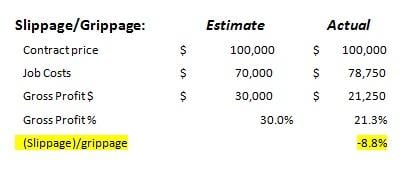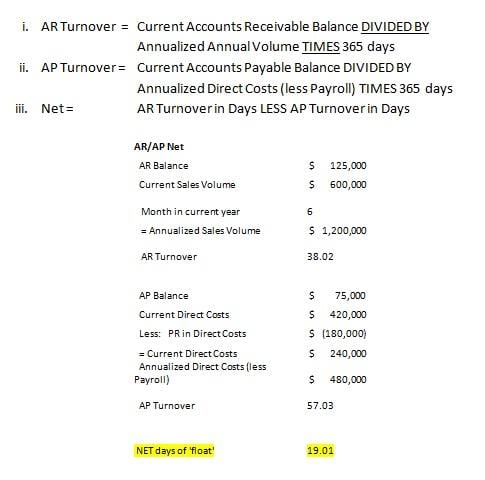
Guest Blogger: Judith Miller has worked with remodelers nearly 30 years; she writes for Remodeling Magazine, facilitates for Remodelers Advantage and consults with remodelers around the country with particular focus on the importance of good financials! Visit her website at www.remodelservices.com
Two Ways To Predict and Measure Good Cash Flow
In his excellent blog post on cash flow, Shawn mentioned direct costs, overhead and net profit as all potentially contributing to good cash flow. And, as he so rightly pointed out, the potential for good cash flow begins with accurate pricing for the job. Shawn also mentioned the importance of working on ‘accrual’ accounting rather than cash. When you’ve got these important elements of good construction accounting in place, you can lay out a couple metrics which will be useful in understanding cash flow.
First, get all your costs in the right place on the Profit/Loss:
Income = revenue from construction projects
Direct Costs = expenses, including ALL labor (even that production manager who doesn’t keep a time card) AND associated labor burden, related to jobs for which you receive the income. Don’t include work on your own house or you Mom’s in this category because you’ll skew (and screw) the numbers.
Overhead = all costs it takes to run an office, including a construction office, but not related to jobs – those costs go into Direct. This includes marketing expenses, rent, office supplies, professional fees, owner and admin salaries and related burden, general insurance – not liability or workers comp which go into Direct.
(List of Typical Accounting Terms and Definitions)
Second, establish a good system for job cost analysis
A good system for job cost analysis lays out the true estimated cost of the job – no SWAGs or ‘guesstimates’ – and allows you to post costs against the estimate as they are incurred. Remember that a cost is incurred WHEN THE WORK IS DONE not when the bill is received.
Third, reliable reports are accurate, complete and timely
Prior to calculating these metrics, be sure to review all reports for reliability.
Now you’re ready to develop these two useful metrics:
 1: Slippage/Grippage: this metric calculates the difference between your estimated gross profit and the produced gross profit. Slippage is negative, grippage is positive. This is of critical importance because if you’ve got slippage either your estimating is wrong or your production is not working up to expected efficiency. And if you’ve got grippage, you might be leaving money on the table from estimating too high. Control of production allows for profits which can then be managed to ensure good cash flow.
1: Slippage/Grippage: this metric calculates the difference between your estimated gross profit and the produced gross profit. Slippage is negative, grippage is positive. This is of critical importance because if you’ve got slippage either your estimating is wrong or your production is not working up to expected efficiency. And if you’ve got grippage, you might be leaving money on the table from estimating too high. Control of production allows for profits which can then be managed to ensure good cash flow.- The calculation is: Estimated gross profit margin MINUS Produced gross profit margin
- The goal should be no more than 2 percentage points slippage – or grippage.

 2: AR/AP Turnover Net: this metric calculates the difference between the number of days it takes to RECEIVE your cash from customer’s invoices (AR Turnover) and to PAY your customer’s expenses (AP Turnover). If you receive money from your customers in 10 days and pay your expenses in 15, you’d have 5 days “float” – a good thing! However, if the reverse is true, you might have to borrow to pay the bills.
2: AR/AP Turnover Net: this metric calculates the difference between the number of days it takes to RECEIVE your cash from customer’s invoices (AR Turnover) and to PAY your customer’s expenses (AP Turnover). If you receive money from your customers in 10 days and pay your expenses in 15, you’d have 5 days “float” – a good thing! However, if the reverse is true, you might have to borrow to pay the bills.
The calculation is three part:

Once your accounting system is set up correctly, information is entered accurately, timely and consistently, you’ll be able to see where the money comes from, where it goes and how to control the all important cash flow! This is a set of gears which all work together to produce profits and protects cash!








